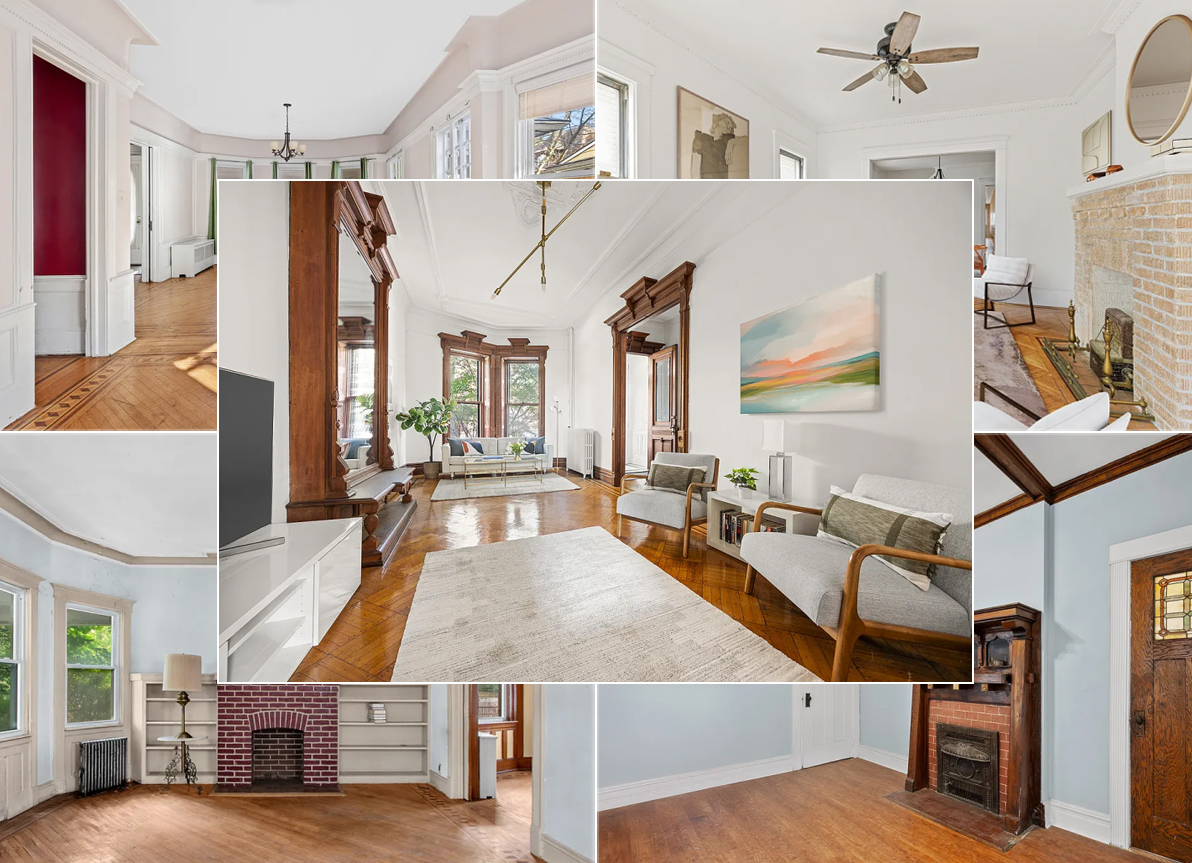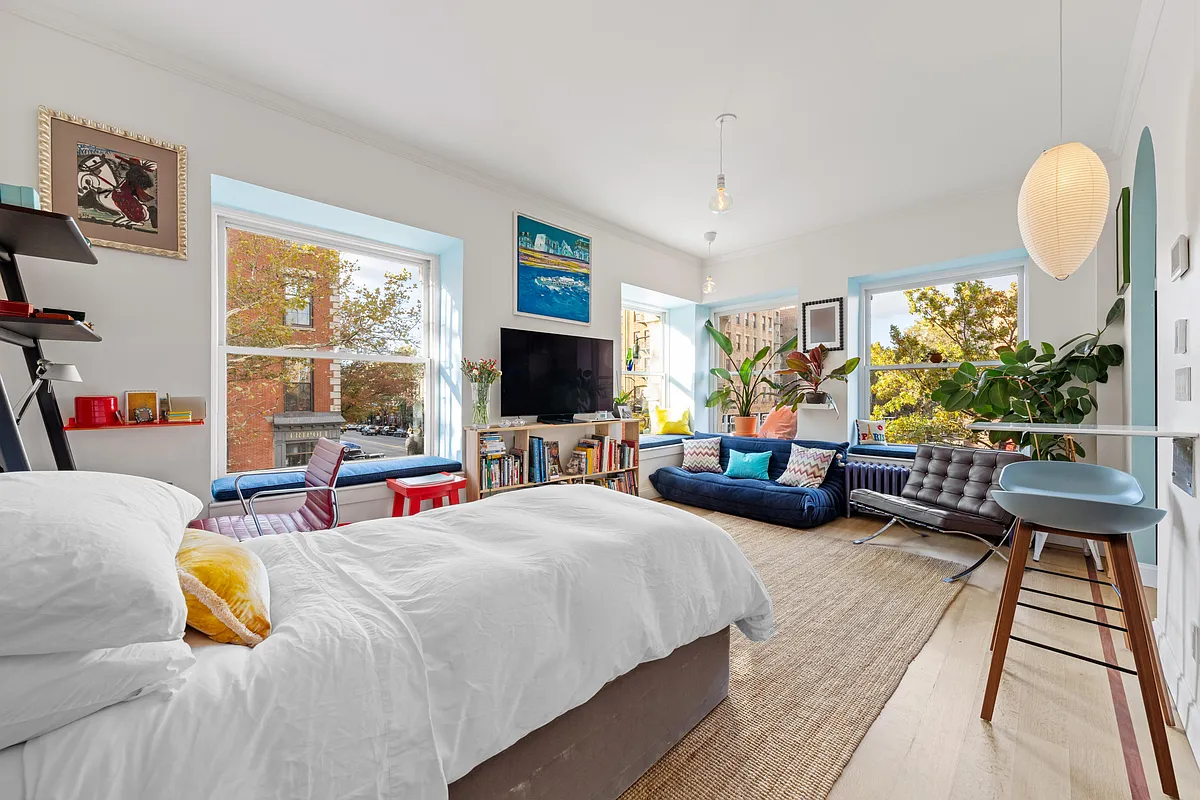Domino Sugar Factory Proposed for Landmarking
Despite last year’s depressing failure to gain Landmarks designation for 184 Kent Avenue, the Waterfront Preservation Alliance is refocusing its efforts on the ever-changing landscape of Northern Brooklyn. First Up: The Domino Sugar Factory. On Tuesday, the group formally requested that the Landmarks Preservation Commission designate the Domino Sugar Refinery in Williamsburg as a New…


Despite last year’s depressing failure to gain Landmarks designation for 184 Kent Avenue, the Waterfront Preservation Alliance is refocusing its efforts on the ever-changing landscape of Northern Brooklyn. First Up: The Domino Sugar Factory. On Tuesday, the group formally requested that the Landmarks Preservation Commission designate the Domino Sugar Refinery in Williamsburg as a New York City Landmark. The Domino site includes buildings that date to the 1880s, and occupies over five blocks of the East River waterfront. Why the urgency? The site is scheduled to be rezoned for residential use and early designs by Rafael Vinoly show plans to largely destroy most of the historic features of the building, according to a WPA press release. Of particular interest to us, given how much grief we’ve given him for failing to protect other historic buildings, is the fact that David Yassky has signed on in support of the designation. Did we mention he has a small election coming up next week? Regardless of the motivation, it’s a nice change in attitude. The Preservation League of New York State, the Municipal Art Society, the Historic Districts Council, and the Roebling Chapter of the Society for Industrial Archaeology have all also joined WPA in petitioning the LPC.
American Sugar Refinery [Waterfront Alliance] GMAP





Scott –
According to the press release, there are three older buildings (1880s?), including the large central one in Brownstoner’s photo above (and which is blocked by newer buildings in this pic). They are all in the same style. And you are right, these are all remarkable buildings that could be cleaned up and converted to residential. There is also interest in the large concrete and glass building with the sign – striking structure, though much less architecturally, and hard to figure how it would be used. But everyone who sees it wants the “apartment” at the top!
Gowanus Lounge has a picture up of only image of Vinoly’s design seen to date (gowanuslounge.blogspot.com) – a poor quality cell phone shot.
I recall seeing an experimental house on the SUNY New Paltz campus years ago that had double layered windows. During the day they could be clear to allow sunshine in and at night a layer of insulation would blow in to reduce heat escaping. I’m sure that the technology has improved over the years and they could do something even niftier now a days if the architect and engineers actual gave a toss about making a green building.
Does anyone know which buildings they want to designate? I think the old red brick gigantic one could be cool when cleaned up and re-used, but for the most part, most of the site buildings look post war, and pretty ugly to me. Does anyone have a link to photos or renderings of what Vinoly or the developers have planned?
lp, I like your suggestion to preserve brownstone blocks.How about some of the very much intact vernacular housing in Williamsburg itself. Ever walk down Fillmore Place?
I also think that since the drawings to replace Domino were done by a first class architect like Vinoly, maybe something first class (and creative) could be done that incorporates some of the existing buildings of one of the last great industrial structures from the past on the Bklyn Waterfront. Why are unimaginative glass condos the only things being built? I cringe when I think of the energy these building consume. As far as I know (architects please comment) glass can be made to either hold heat efficiently or facilitate cooling but NOT both.
lp, I like your suggestion to preserve brownstone blocks.How about some of the very much intact vernacular housing in Williamsburg itself. Ever walk down Fillmore Place?
I also think that since the drawings to replace Domino were done by a first class architect like Vinoly, maybe something first class (and creative) could be done that incorporates some of the existing buildings of one of the last great industrial structures from the past on the Bklyn Waterfront. Why are unimaginative glass condos the only things being built? I cringe when I think of the energy these building consume. As far as I know (architects please comment) glass can be made to either hold heat efficiently or facilitate cooling but NOT both.
“Yeah, they weren’t priveleged to form a NIMBY juggernaut like DDDB, ”
….what’s wrong about people protecting their neigborhoods? this ‘nimpby’ comment is so idiotic – do you think ratner-bloomberg want a stadium on the upper east side? do you think they would ever allow it to happen by their brownstones? I find it funny that people support giving huge subsidies to a billionaire developer, who apparently, can’t figure out how to make a profit in a booming market…yeah he’s the one I want ‘developing in brooklyn. he’s done a bang-up job already…
oh and anon…right! let’s BUILD BUILD BUILD until we have the population density of Calcutta, because we all know how pleasant living there can be. Do you think, at all, about the future? no just $$$$ and you and greedy developers put the burden on future generations to fix. if everyone was like you brooklyn would be a big ugly big box dump, just imagine if developers had their way in the 60s – no brooklyn heights….an elevated highway down 5th avenue…
It’s not a “sneer” Nicolo, and I did think of the fact that 19th century factory workers, and those of later generations, probably lived nearby, but on balance, living by a factory is not the best for peoples’ health or quality of life. It is a derelict site now, and yes, maybe it could be converted to be used as housing. I doubt light manufacturing jobs are goint to be created to fill this space. If it is converted into housing, how is that different from making condos.
I think people sometime have a romanticized view as to what NYC and Brooklyn was 150 years ago – some “neighorhoody” place to live were the working man got by easily and had a good quality of life.
Those things should be strived for, but I do not see how preserving this factory and convertin it into condos, as opposed to razing it and building condos, will do that. NYC’s post industrial waterfront need’s to be upgraded so people can actually enjoy it in the same manner as other great cities with waterfront property.
In the end, I don’t feel terribly strongly about this, so I’m not trying to stir the pot. I just think LPC’s attention would be better focused on protecting in-tact 19th century brownstone blocks and neighborhoods that for some reason were not included in the landmark districts that were established in the 70s and 80s.
Tear it down, build very very tall buildings that increase the supply of apartment. Then those poor souls might be able to work to live instead of live to work. if every garbage dump like this was lanmarked there would not be a city
Not that I disagree with the thrust of lp’s comments but the sneer at “unfortunate souls” is gratuitous. Believe it or not, many of the people who lived nearby also worked in that building. Admittedly, dirty and physical, even dangerous work. But it was work, industrial work, that drew them there. Yeah, they weren’t priveleged to form a NIMBY juggernaut like DDDB, and they had to fight for their economic lives with that employer, but it was still work and jobs for people without Ivy educations, who didn’t really speak a whole lot of the Kings English, in short, work for Brooklyn. They can’t do anything on the new waterfront except leave.